Veteran jazz singer Dame Cleo Laine dies aged 97
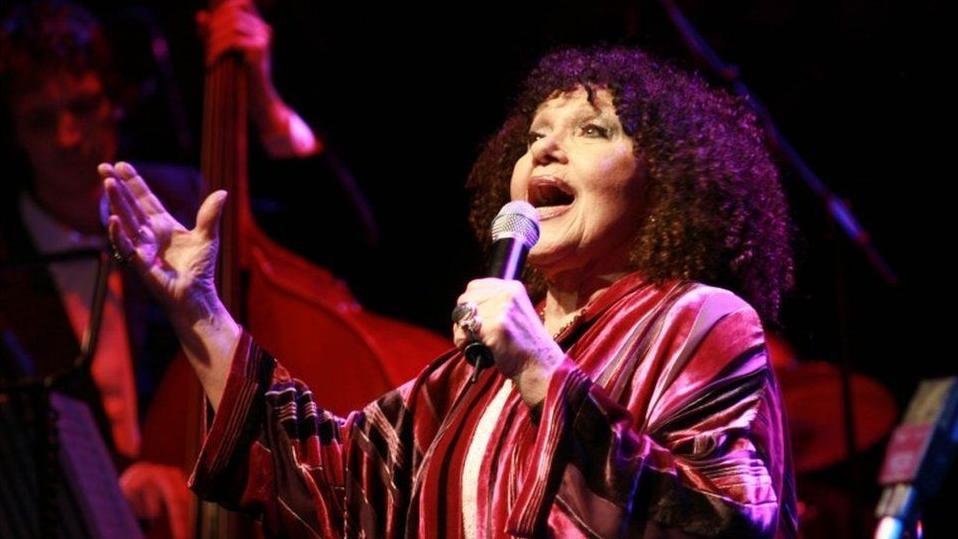
- Published
Jazz singer Dame Cleo Laine, famous for her huge vocal range and wide musical repertoire, has died at the age of 97.
In a long career, Dame Cleo was the first British singer to win a Grammy Award in a jazz category and performed with all the greats - including Ray Charles and Frank Sinatra.
However, her greatest collaborator was her husband, late musician and composer John Dankworth, with whom she established her career in the 1950s.
They also set up the Stables arts centre in Buckinghamshire, which said in a statement it was "greatly saddened today by the news that one of its founders and Life President, Dame Cleo Laine has passed away".
David Meadowcroft, chairman of the Stables charity, said: "Dame Cleo was a remarkable performer who was loved by audiences around the world and her commitment to ensuring young people had access to great music and music education will continue through the work of The Stables."
Chief executive and artistic director Monica Ferguson said: "Dame Cleo was admired greatly by fans, other musicians and by The Stables staff and volunteers.
"She will be greatly missed but her unique talent will always be remembered."
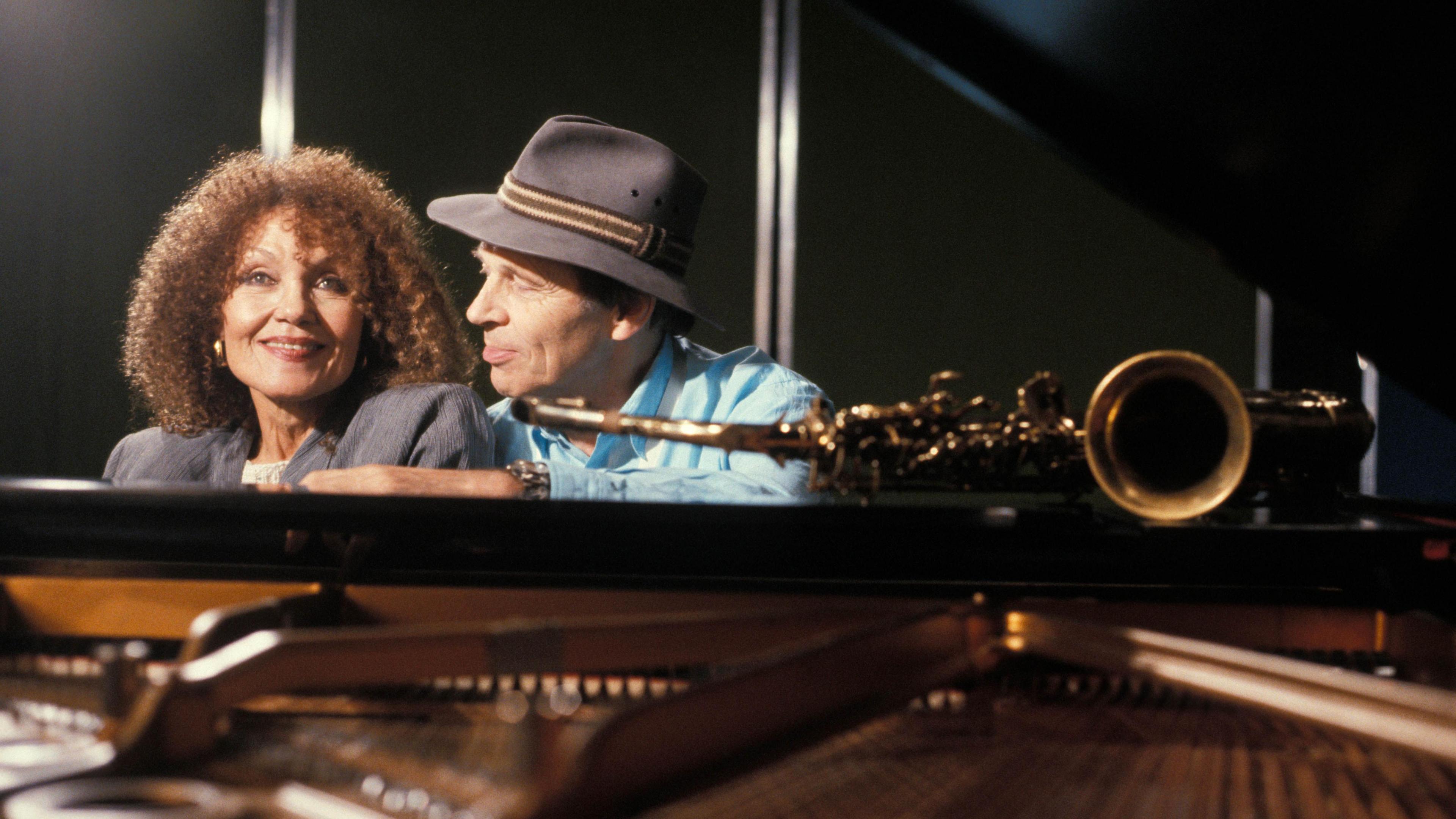
Dame Cleo Laine and her husband Sir John Dankworth at the piano
With her electric green eyes, corkscrew hair and husky contralto voice, Dame Cleo became the most recognisable British jazz singer in history.
She had a four-octave vocal range and the ability to perform everything from Schoenberg to a Spike Milligan hit about a man with too many tonsils.
One critic said that she was one of Britain's two great contributions to jazz - the other being gin.
And the Sunday Times once described her as "quite simply the best singer in the world."
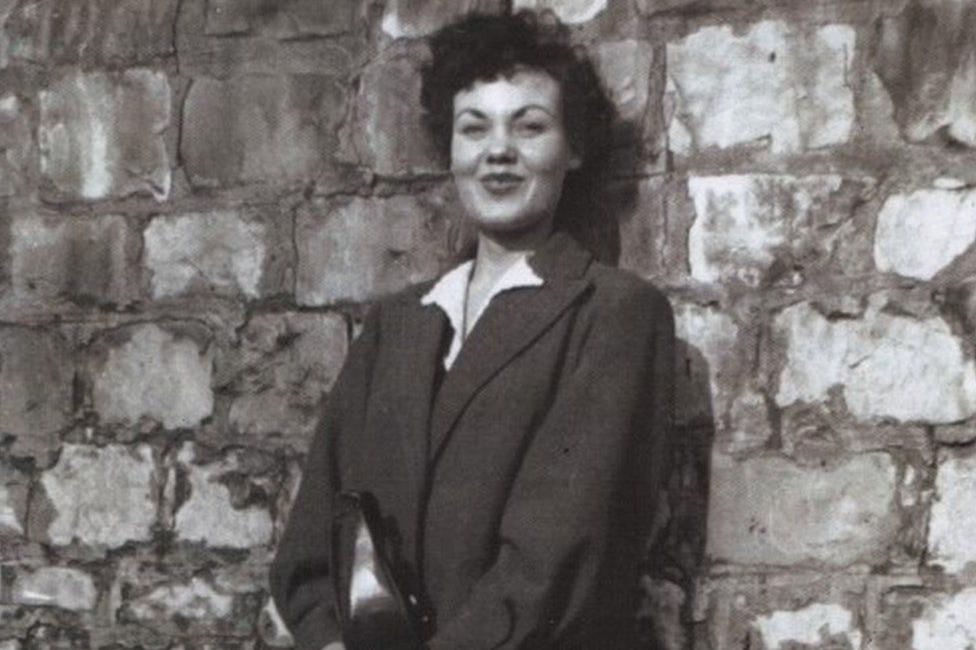
Cleo Laine photographed in her late teens in 1945
Clementine Dinah Hitching was born in Southall, Middlesex on 28 October 1927.
Her father was a Jamaican World War One veteran, Alex Campbell. He worked (occasionally) as a labourer and - with money always short - sang on the streets to help put food on the table.
Her mother, Minnie Hitching, was a farmer's daughter from Swindon - disowned by her parents who disapproved of interracial relationships.
Clementine's parents didn't marry until after she was born, so her mother's maiden name was used on the birth certificate.
Somehow her parents found the money to pay for music lessons, and she spent time listening to her brother Alexander's jazz records.
She began singing at local community functions from the age of three, and set her sights on an acting career.
"I desperately wanted to have something to do with performing," she later said. "If I wasn't going to be on stage, then I was going to sweep it for a living."
She made her first film appearance at the age of 12 as an urchin in Alexander Korda's film The Thief of Baghdad in 1940.
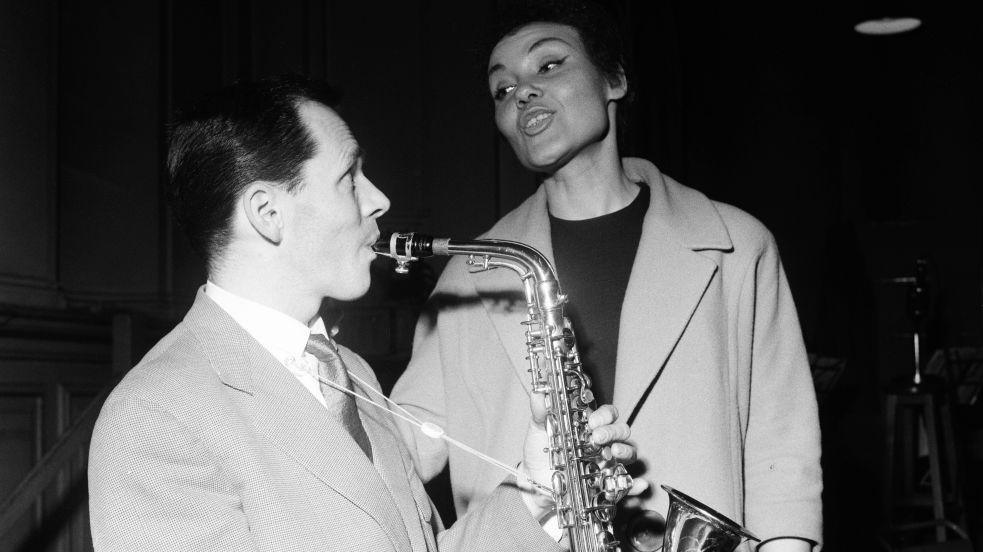
Cleo Laine and John Dankworth photographed in the 1950s
With her parents divorced and little money coming in, young Clementine was forced to leave school at the age of 14.
She took a variety of wartime jobs including working in a hairdressers, as a hat maker and - finally - in a pawnbroker's shop.
In 1947, she married a roofer, George Langridge, and had a son, Stuart - but continued to audition for singing roles.
It took years for her talent to be recognised. She went to dozens of auditions but recalled that "a fat soprano singing Madame Butterfly rather badly always won".
She received an invitation in 1951 to try out with the Johnny Dankworth Seven, an established jazz group.
The future star turned up wearing a fur coat in the heat of summer and gave it her best shot.
"I think she's got something", said Dankworth.
"She's got everything," replied trumpeter Jimmy Deuchar.
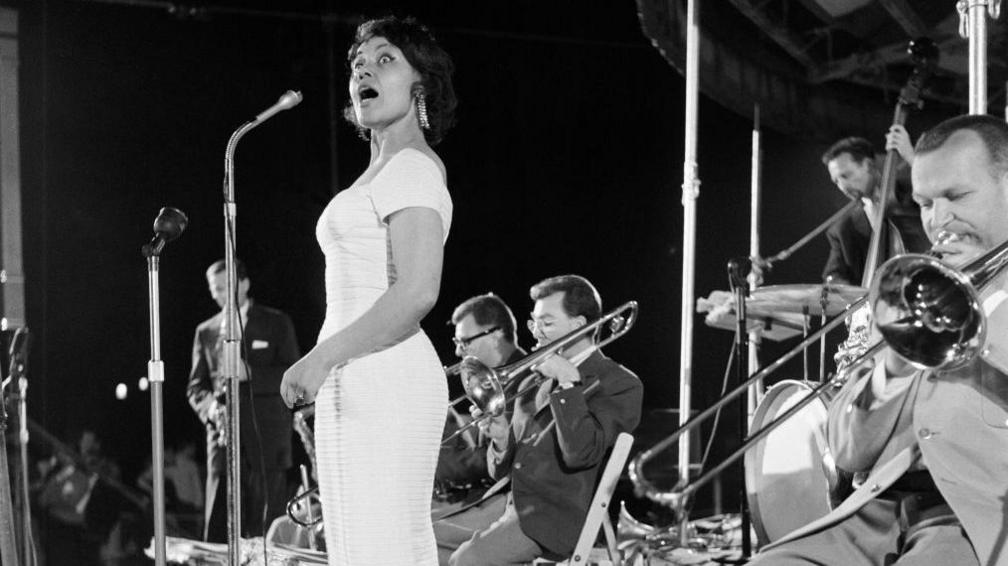
As a performer, Cleo Laine "had everything"
Dankworth offered her a job at £6 week, but she held out for £7.
Because her name was too long to fit on posters, the band put some shorter alternatives into a hat.
'Cleo' and 'Laine' got pulled out. So, Cleo Laine she became.
Newly christened, she became known for scat singing, a vocal style that originated with ragtime - which enabled her to improvise melodies using her voice as an instrument.
By 1958, she had divorced Langridge and married Dankworth.
"I guess he married me because he wanted a cheap singer," she quipped. "But what he got was an expensive wife."
However, she also felt there was a danger she would remain a singer in the band for the rest of her life.
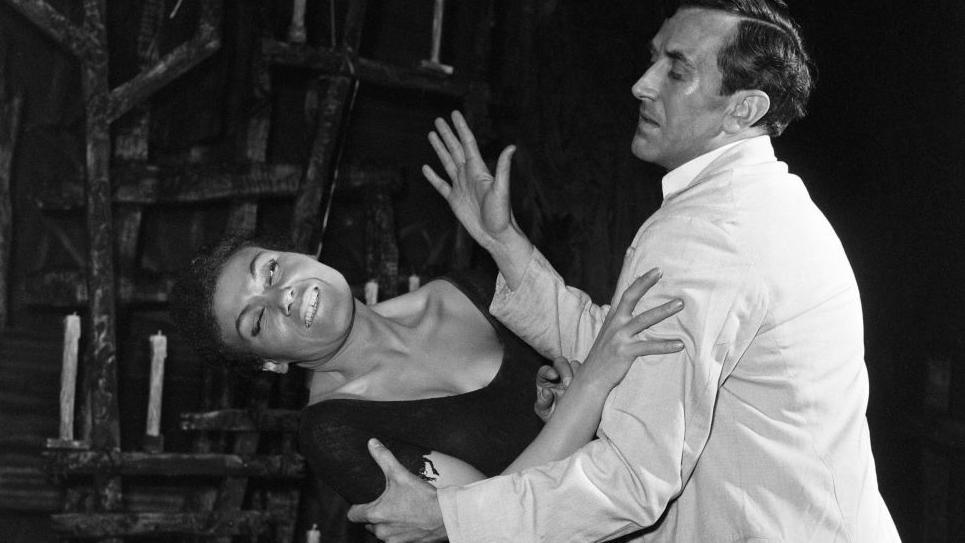
Cleo Laine and Edgar Wreford in Flesh to a Tiger at the Royal Court Theatre in 1958
Accordingly, she successfully auditioned for the part of Della in Flesh To A Tiger, a play set in Jamaica.
It was staged at London's Royal Court Theatre and was directed by famous actor Tony Richardson, who - at the time - was unaware of her career as a singer.
The critics loved her performance and it led to a string of stage appearances including A Time to Laugh with Robert Morley and her acclaimed portrayal of Julie in the 1971 production of Show Boat.
She continued to sing and had a top 10 hit in 1961 with You'll Answer Me, recorded while she was performing in Kurt Weill's opera/ballet The Seven Deadly Sins.
In 1964, the album Shakespeare and All That Jazz, recorded with her husband on clarinet and saxophone, was released to critical acclaim.
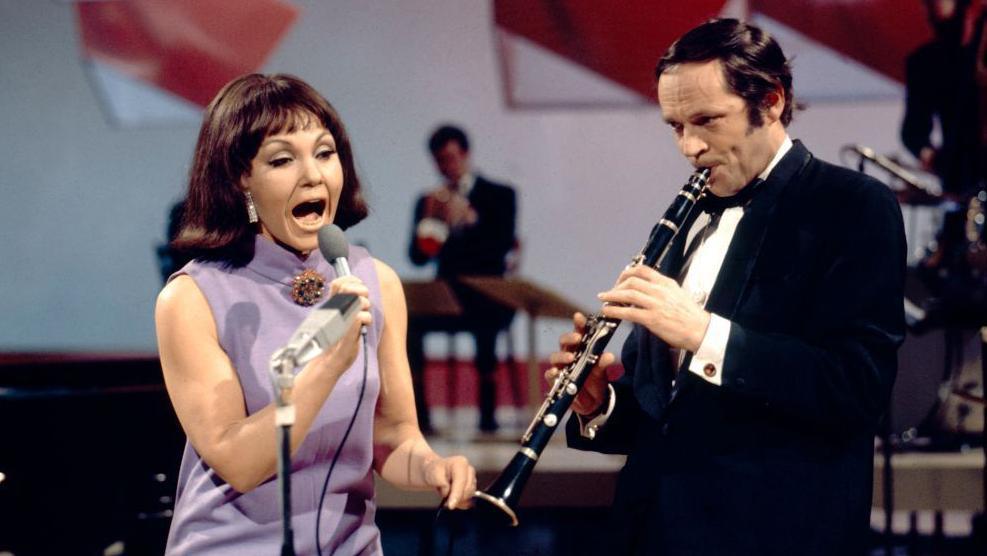
Cleo Laine and John Dankworth at BBC Television Centre in 1963
She launched her international career in 1972 with a tour of Australia, but a stopover performance in America on the way home failed to attract much of an audience.
However, she returned - at US jazz musician Duke Ellington's invitation - and received gushing reviews from critics. In the following year, she sold out Carnegie Hall.
"The British, who have been dropping one rock group after another on us for years, have meanwhile been hoarding what must be one of their national treasures," said the New York Times.
Laine went on to tour America every year, picking up several Grammy nominations, and becoming the first artist to be nominated in both the pop and classical genres.
She finally won a Grammy for the live recording of a concert at Carnegie Hall in 1983.
"Yes, I was very honoured," she said afterwards.
"But you see, I have been nominated for a Grammy five times, so my enthusiasm is, well, tempered by experience."
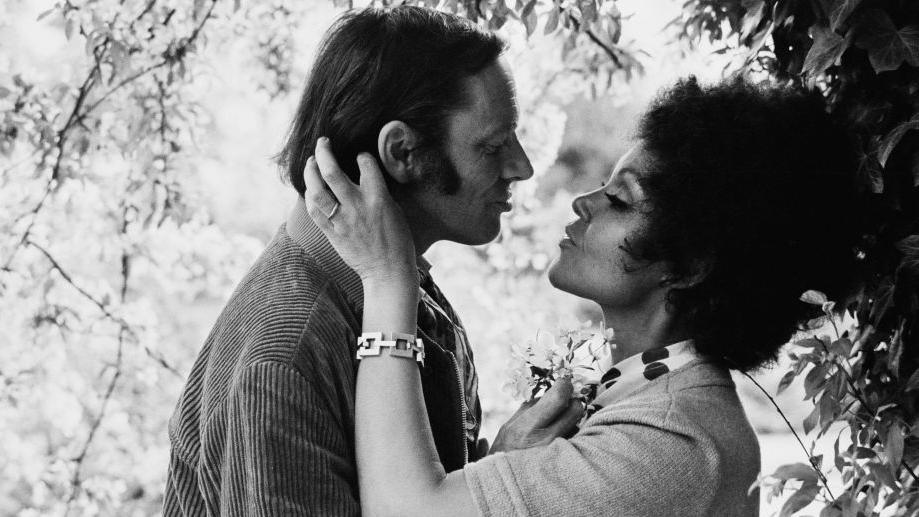
John Dankworth and Cleo Laine pose for the cameras in 1970
Awarded an OBE in 1979, she became a dame in 1997 - an honour she hesitated to accept, finally deciding to do so "for jazz".
Together with her husband, she set up The Stables, which aimed to introduce music to as many people as possible and break down the barriers between genres.
The Stables theatre, set up in the grounds of their home in Buckinghamshire, saw performances from artists ranging from Cerys Matthews to Courtney Pine.
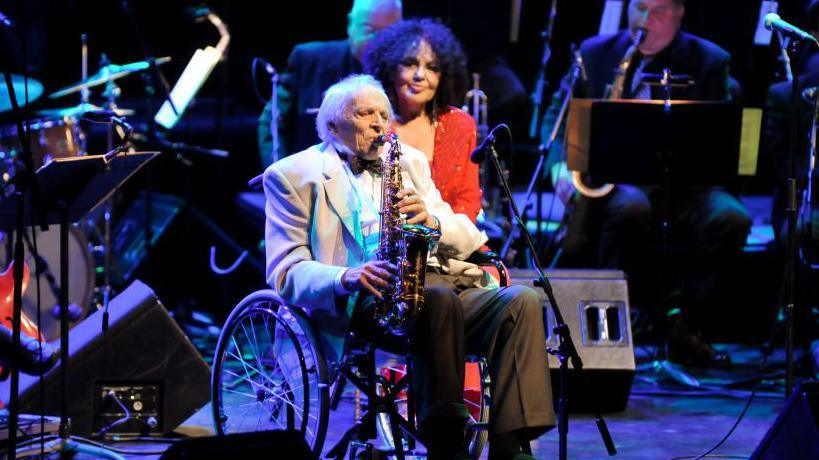
John Dankworth and Cleo Laine at the Royal Festival Hall in 2009
In February 2010, just hours before the couple were due to perform a concert to celebrate 40 years of The Stables, John Dankworth died.
Dame Cleo and other family members went on with the concert, only announcing the death to a stunned audience at the end of the show.
A month later, their final recording together, Jazz Matters, was released.
In the years that followed his death, she continued to perform either solo or with her children Jacqui and Alec, who had both become musicians.
In 2024, she saw her granddaughter Emily embark on her own career as a professional singer.
Even in her 90s, Dame Cleo gave occasional concerts - with one reviewer remarking on how she remained a "warm and witty human being, capable of transfixing her audience with those flashing eyes and spontaneous laughter".
"I want to keep on going unless my voice develops a wobble, for as long as people want to hear me sing," she said in an interview months after Dankworth's death.
"Singing", she added, is "the one thing that keeps me going, really."
Related topics
- Published3 November 2010
- Published12 December 2014